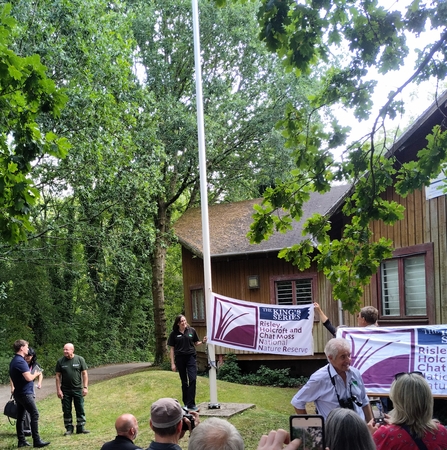Ten thousand years in the making and launched this week, the new Risley, Holcroft and Chat Moss National Nature Reserve will provide a destination for the people of Warrington and Greater Manchester to access nature-rich landscapes.
The newest addition under the King’s Series, this network of 11 sites from lowland raised bogs and fen, through to lowland heath, wet woodland and drier woodland habitats will be restored to provide homes for rare species, such as lapwings, curlew, sundew and adders.
After being at the centre of the industrial revolution, this area is becoming a leading example of nature recovery, through the restoration of some of our most important and precious habitats.


